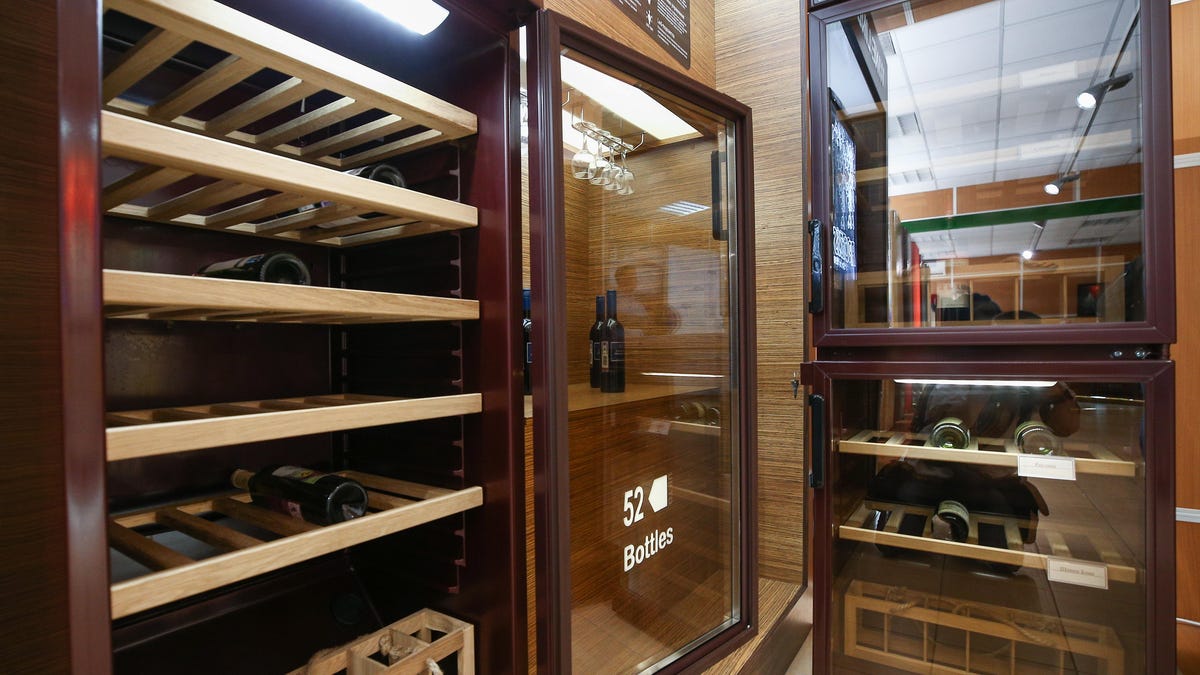How to choose a wine cooler
Wine enthusiast or not, having a wine cooler in the kitchen can up your entertaining game. Here's how to pick the right one.

Adding a wine cooler to your home offers convenient access and accurate storage for all types of wine.
If you enjoy wine, you may have considered buying a wine cooler at some point. It can be a smart purchase -- they're a great way to store all types of wine at the correct temperature, which ensures correct aging and accurate flavor profiles.
For anyone who loves to host parties, a wine cooler makes serving more convenient and keeps everyone out of your fridge (where your wine shouldn't be anyway).
Whether you're a diehard collector or just want to keep a few wine bottles stored correctly, wine coolers are the answer. Here are a few things to keep in mind on your hunt for the perfect cooler.
Know your needs (and your budget)
The first thing you should decide is what exactly you need. If you're an avid entertainer, having an easily accessible, roomy cooler with a lot of features and options might be a priority. Showcase LED lighting and dual temperature zones might be at the top of your list.
If you're looking for a solution for more personal, small-scale collecting, you might not need quite as many bells as whistles or bottle capacity.
Wine refrigerators have a vast price ranges. You can easily find small models found for just shy of $100 (£75, AU$135) while models holding 150 bottles or more can climb into the thousands. Scaling back on bottle capacity, luxury materials like wooden racks or tech extras such as a digital display can help cut down on the cost. Once you've nailed down a "must-have" features list and a price point, you can focus on size and shape.
Study your space
Countertop dishwashers offer a space-saving wine storage solution.
You'll need to consider where the wine cooler is going to live. Size will likely be a limiting factor, unless you're building a kitchen from scratch. Wine coolers come in many sizes, often classified by the bottle capacity. Of course, the more bottles a cooler holds, the larger it will be.
If you're remodeling your kitchen, a built-in wine cooler offers a seamless look beside your regular base cabinets, much like a built-in dishwasher . If your cabinet layout doesn't offer a space for a built-in, freestanding models still look great tucked in a corner or against a wall.
There are also furniture-style models, encased in finished wood for a more traditional, less conspicuous look. Those work great if you're planning to store your wine in an entertaining area outside the kitchen. If you're really low on space, you can even find countertop models with room for as few as six bottles.
Think about temperature
A lot of people assume white and red wines should be stored at different temperatures. According to Wine Enthusiast, that's not really the case. The ideal temperature for storing all wines, red or white, is around 45 to 55 degrees Fahrenheit (7-12 degrees Celsius), and the default temperature for large, standard refrigerators is 37 degrees (2 degrees C), much too cold for any wine's long-term storage needs.
Where wine varieties do differ is with serving temperature. White wine is often served chilled, while red is served slightly warmer. This is where dual-temperature zone wine coolers come in really handy, especially if you entertain. You can use one zone to store wines and one to serve from, allowing you to skip throwing a bottle in the refrigerator or ice bucket to chill it down.
The last note about temperature has to do with cooling methods. Smaller coolers often use thermoelectric cooling rather than a traditional compressor and refrigerant. This system uses a cooling node with an electrical current that passes through a ceramic tile, plus fans that evenly distribute the temperature. This system is thought to create more vibrations, which could disturb the sediments in the wine bottles. The upshot is that these coolers are often quieter than a compressor-style cooler.
Consider extra features
Wine fridges, like so many appliances these days, can come with tons of extra features. LED lighting, digital temperature displays and rack material can add convenience and style to your wine cooler. Some units include safety sensors, alarms or locks to keep your wine secured.
Of course, all of those extras will cost you, and most aren't entirely necessary for the wine cooler to do its job. Stick to models with just a few features to save cash.
No matter what kind of wine cooler you choose, getting your wine out of your regular refrigerator and into the right climate will enhance your overall tasting experience. You'll never look at a bottle of Chardonnay the same way.
Not interested in wine? How about a regular cooler? We tested the best
Wine's newest bouquet has hints of berries - and data Curious about high-tech wine making? We've got you covered

